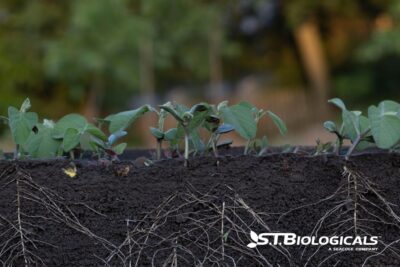Soil electrical conductivity (EC) is a vital parameter that plays a significant role in modern agriculture. Understanding and managing soil EC can help you optimize crop yields, improve soil health, and make informed decisions about irrigation and fertilization. What are the impacts of soil EC and what are the best ways to measure it?
What is Soil Electrical Conductivity (EC)?
Soil electrical conductivity is a measure of the soil’s ability to conduct an electrical current. This ability is influenced by the presence of soluble salts, moisture content, and temperature. EC is typically expressed in units of decisiemens per meter (dS/m) or millisiemens per centimeter (mS/cm).
How Does Keeping Track of Your Soil EC Impact Your Ag Profit?
Are you using precision ag practices? Measuring soil EC gives you valuable information about the essential nutrients in your soil. You can avoid profit-killing over- or-under-fertilization and make sure your crops have access to the necessary nutrients for optimal growth. This study showed that integrating soil EC measurements with precision agriculture technologies improved nutrient management and reduced fertilizer runoff, contributing to sustainable farming practices.
Healthy soils with balanced EC levels support better root development, microbial activity, and nutrient uptake. Regular monitoring of EC levels alerts you to problems before they get out of hand.
Often, the very act of fertilization creates an imbalance in your soil. Fertilizers are salt-based, and our erratic flood and drought occurrences have caused slight salinity in much US cropland. Keeping up with EC measurements can help you catch a salinity problem before it begins to impact your crops. Testing irrigation water goes hand-in-hand with soil EC testing. You could be irrigating with saline groundwater.
Irrigation management is more important as the weather patterns change dramatically. By understanding the soil’s water-holding capacity and salinity levels, you can optimize irrigation schedules to prevent water stress and use your available water efficiently.
A discussion of soil EC wouldn’t be complete without looking at yield. Correlate EC levels with crop performance, and you can make informed decisions to maximize yields and profitability.
Dryland farming or ranching? You still need to know the EC levels because rain—either too little or too much—is still irrigation. If you’re not getting enough precipitation, EC measurements can help you make informed decisions about salt remediating cover crop additions to your crop rotations.
Farming is a business, and you have to keep good records, not just for taxes, but to future-proof your ag operation for generations to come.
Measuring Soil EC for Sustainability and Profit
There are several methods available for measuring soil EC, each with its own advantages and considerations:
Handheld EC Meters
Handheld EC meters are portable devices that measure soil EC directly in the field. They are relatively inexpensive (ranging from $50 to $200) and provide instant readings. These meters are suitable for farmers who need quick, on-the-spot measurements.
Soil Sensors
Soil sensors are installed in the field to continuously monitor soil EC and other parameters. These sensors can be part of a larger precision agriculture system. The cost of soil sensors varies, but a basic setup can range from $200 to $1,000. They offer high accuracy and real-time data, making them valuable for detailed soil management.
Laboratory Analysis
Soil samples can be sent to a laboratory for EC analysis. While this method provides highly accurate results, it is more time-consuming and expensive (approximately $20 to $50 per sample). Laboratory analysis is ideal for detailed soil studies and long-term monitoring.
Measuring soil electrical conductivity is an essential practice for modern farmers. By understanding and managing soil EC levels, you can optimize nutrient management, control salinity, assess soil health, and make informed irrigation decisions. The impact of soil EC on crop yields is well-documented, with numerous studies highlighting its significance.
Farmers have various methods at their disposal for measuring soil EC, ranging from handheld meters to sophisticated soil sensors. Selecting the appropriate method depends on factors such as budget, accuracy requirements, and the need for real-time data.
By incorporating soil EC measurements into your ag practices, you can enhance crop productivity, improve soil health, and contribute to sustainable agriculture. Do you need guidance on the best way to measure EC on your acres? Contact our team at ST Biologicals and we’ll explain in depth the different testing protocols and how to implement them. We’re here to help you succeed. When soil speaks, we listen.

